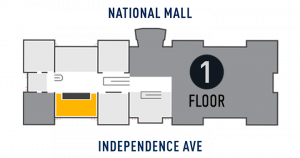When Cirrus Aircraft co-founder Alan Klapmeier barely survived a midair collision in 1985, he vowed to put a parachute into all future Cirrus airplanes. By 1999, Alan and his brother, Cirrus co-founder Dale Klapmeier, had created the Cirrus SR20. With a parachute, better visibility, and an ergonomic interior design, it was safer and looked great. In 2001, Cirrus debuted the faster and improved SR22. In 2003, it added a full glass or computer-based Avidyne instrument panel to both designs. The Cirrus series was a “clean sheet” design— new inside and out—the first in 50 years.
In 2003, this Cirrus SR22, N266CD, became the first single-piston engine aircraft with a “glass panel”— fully integrated avionics via computer screens—to be FAA certified. The primary flight display showed basic instrument information like altitude and airspeed. Its multi-function display provided moving maps, communication, weather radar, and other data. Prior to the SR22’s full Avidyne panel, this technology had only been available in commercial and multi-engine aircraft, or as separate components. As an all-new design, the SR22 became the instant best seller of its class, energizing the general aviation market.
Display Status
This object is on display in Thomas W. Haas We All Fly at the National Air and Space Museum in Washington, DC.

Object Details
Type
CRAFT-Aircraft
Physical Description
Single engine, low single piece wing, conventional fixed landing gear, four seat composite aircraft.
Aircraft is equipped with a disarmed Cirrus Airframe Parachute System (CAPS).
Dimensions
Overall: 792.5 × 1158.2 × 271.8cm, 1029.2kg (26 ft. × 38 ft. × 8.9 ft., 2269lb.)
Materials
Fiberglass, steel, aluminum, rubber, glass, plastic
Inventory Number
A20190436000
Credit Line
Gift of Cirrus Aircraft
Data Source
National Air and Space Museum
Restrictions & Rights
Usage conditions apply
For more information, visit the Smithsonians Terms of Use.
